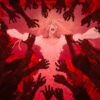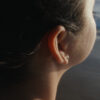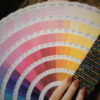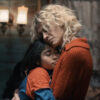When Colin Minahan and Stuart Ortiz decided to take on a different moniker for their directing partnership, they were thinking of practicality as much as perception.
“When it’s a Q & A, you instantly forget [most directors’ names],” said Ortiz. “The Vicious Brothers pretty much describes the kind of films that me and Colin want to make.”
But even if they didn’t undergo a rechristening, The Vicious Brothers have made a name for themselves with their feature debut “Grave Encounters,” a thriller predicated on the raw footage of a reality show of the same name whose crew travels to an abandoned psychiatric hospital to search for ghosts and wind up disappearing themselves. The TV show may be fictitious, but the scares the Vicious Brothers deliver are real, thanks to a fresh approach to the found-footage subgenre of horror that usually dictates that the protagonists should be naïve prey and the predators are nothing but a few creaking doors and some shakycam.
Here, the shaking will be more likely to be limited to your seat as the “Grave Encounters” team, led by their well-coiffed host, a spunky nose-pierced female sidekick and a creepy, jowly psychic, investigate the one-time lobotomy factory with a healthy dose of skepticism off-camera until some suspicious activity forces them to believe in what they’ve pretended to do in the past. Where that seat will be depends on how you catch the film, which is part of Tribeca Films’ fall slate (including the Vincent Gallo drama “Essential Killing” and the high school comedy “Beware the Gonzo”) on demand on August 25th and in theaters in the weeks ahead.
In the meantime, the Vicious Brothers sat down to discuss the making of their first feature, shooting in a possibly haunted location and not settling for cheap frights.
For a found-footage film like this where you have to adhere to a particular style, does it go against the instincts you’ve already cultivated as filmmakers?
Colin Minahan: We both come from a background of traditional filmmaking and traditional narrative style, so when we decided to make a found-footage film, you have to throw away a lot of the inspiration you derive as a filmmaker in most cases and rely on atmosphere more. When Stu and I wrote this film, we were in the process of actually writing a couple other films and while we were doing that, we kept finding ourselves watching these ghost hunting shows. We thought maybe we should make a found-footage film and just kind of went with it.
Did you actually feel like you got to try new things as a result? I’d read that lighting was of particular interest to you.
SO: Yeah, me and Colin kind of have this concept of hard-light horror, which is [how] the scariest thing is when the light source on the camera is literally just a hard, direct light source that’s coming right from the front. It’s like if you’re just going down a hallway and the only light source is coming directly from in front of you and the light just fades off within 10 feet. Anything can kind of jump out at you — it’s just a really creepy thing. And it’s only achievable with this kind of film because the lighting is typically different than on a standard narrative film.
There’s been such a proliferation of paranormal reality shows since you first got started. Did you think you were tapping into something as you were making it?
CM: We knew there were a ton of those shows obviously and we wanted to parody them to an extent because a lot of the stuff you see in them is kind of silly. That’s not to say that we don’t believe in the paranormal, but it felt like the timing was right and it just seemed like the perfect approach for a found-footage film. Everyone wants to see one of these shows where stuff actually happens, but the real problem with ghost hunting reality television shows and every season comes around, it’s just the same thing over and over. It’s people wandering the halls in night vision trying to capture images, but nothing super spectacular every really happens. So when we made this film, we wanted to make a ghost hunting TV show gone wrong where stuff actually happens and you actually see what you are hoping to.
There’s definitely a realistic feel to the film, but you’ve said in the past that there came a point when you decided to push past that to make the film scarier. Was it an easy decision?
SO: It’s funny because when me and Colin were talking about the project, that was a big discussion we had. Initially, we were planning on making a film that was much more “realistic” in its portrayal of the ghost stuff and it’d be a lot more subtle. You probably wouldn’t see very much and it’d be very grounded in reality. Then at some point, we just looked at each other and were like let’s take it farther. Let’s do something crazy where it becomes really, really extreme. It just seemed like it would be a lot more fun.
CM: With “Paranormal Activity” and “Blair Witch Project” and other found footage films before that even, there’s always the implication that ghosts are haunting the place, but you’re never really going to see [it] on camera. You’re just going to see blankets move and doors close and there’s only so many times you can repeat those scares before the audience is just bored by it. I think that was a moment where Stu and I realized we needed to step it up another notch and you know what? Screw it, just let’s show what we want to show.
On the practical side of things, I heard you were torturing your actors a bit by not necessarily letting them know what was behind some of those doors. What was your approach to keeping them on their toes?
SO: Some of the gags that happen in the film are obviously impossible to have it be a surprise, but there were times when we’d set up a hallway of horror where we’d have the actors walk from point A to point B down this long stretch of hall and me and Colin would be watching them on monitors and running around in the rooms that were off the hallway and waiting for the perfect moment when they were right next to the door or something. Then we’d slam our hand against it. We got a lot of realistic reactions doing that.
You had already filmed at the real-life psychiatric hospital you used for this shoot [called “Collingwood” in the film], so were there things you previously discovered about the place that inspired things in “Grave Encounters”?
CM: When we location-scouted the mental institution, there’s plenty of stories that have happened there, just because it’s such a popular location to film in. One of the stories that the liaison said in particular that we found interesting was another film crew had actually shot something there and they’d always closed all the windows and locked them all up at night. When they returned in the morning, several windows would be wide open again. We were still writing the script at the time and we thought, wow, that’s really creepy. So we were able to incorporate some real-life stories that we’d heard into the film.
You’ve said your next film could be a vampire film set in a drug rehab center called “The Clinic.” It sounds like you might not have to look for a new location.
SO: Potentially. That’s one of our projects. We have four different scripts now that we’re just trying to figure out which one clicks next. It would be funny if we had to go to the exact same place again.
CM: [laughs] It’d be scary to shoot there again.
"Grave Encounters" will open in limited release on August 19th at the Sunset 5 in Los Angeles and the Village East in New York before premiering on demand on August 25th. It is also part of a Demand It campaign, so if you'd like to see it at a theater near you, demand it here. UPDATE: The Vicious Brothers have already have crafted a sequel, which can be found here and will be in theaters October 12th, 2012 and is currently available on demand.



